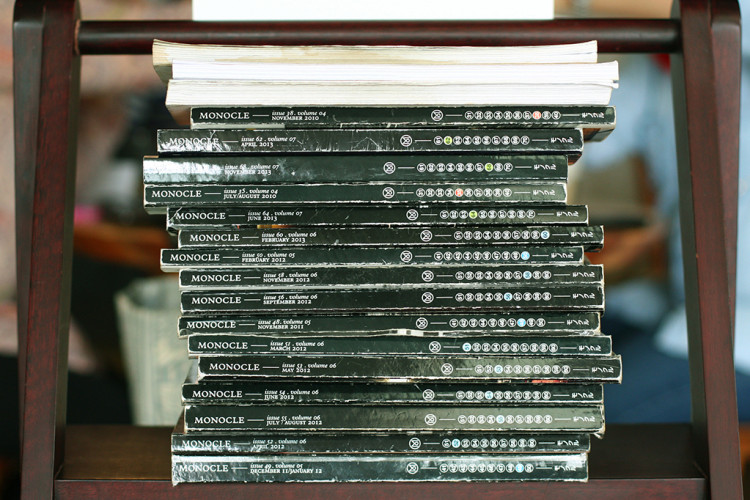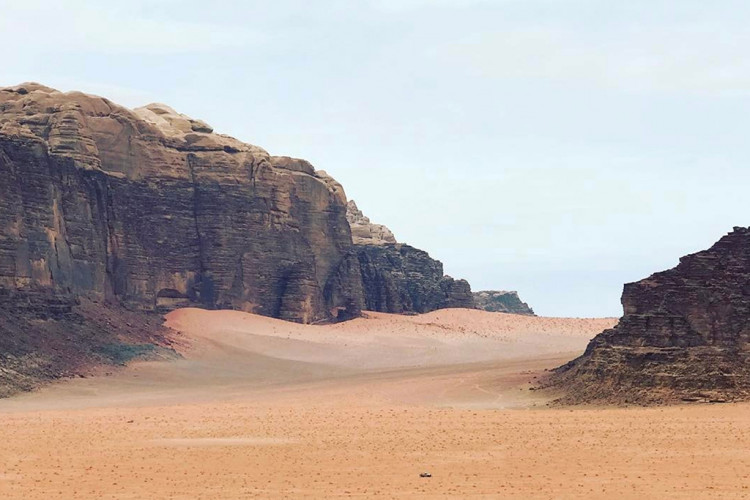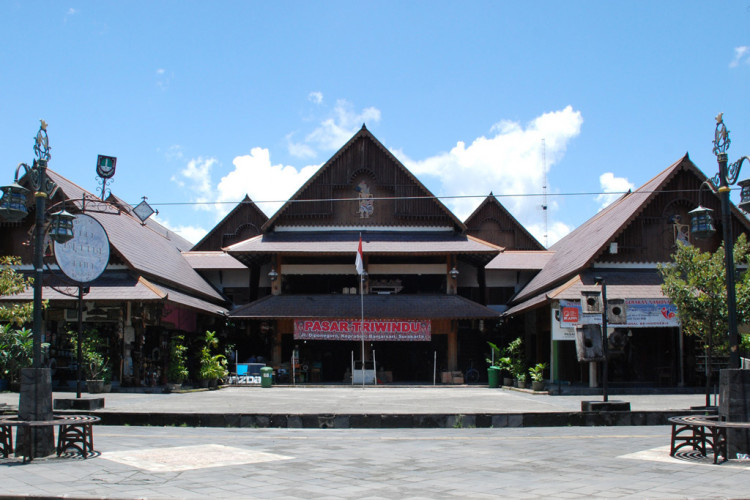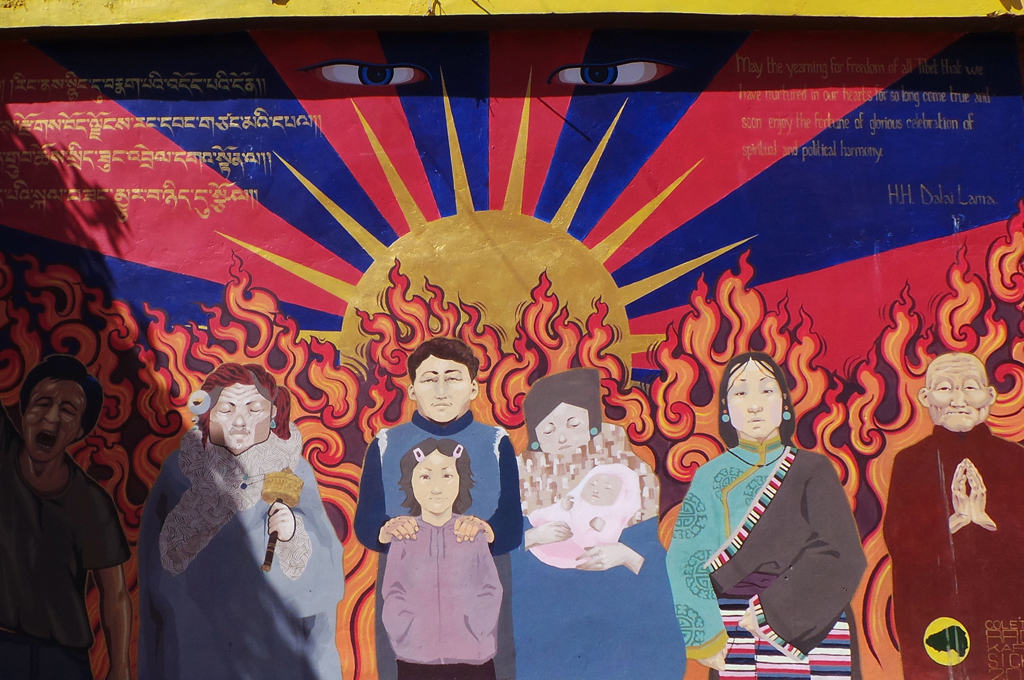
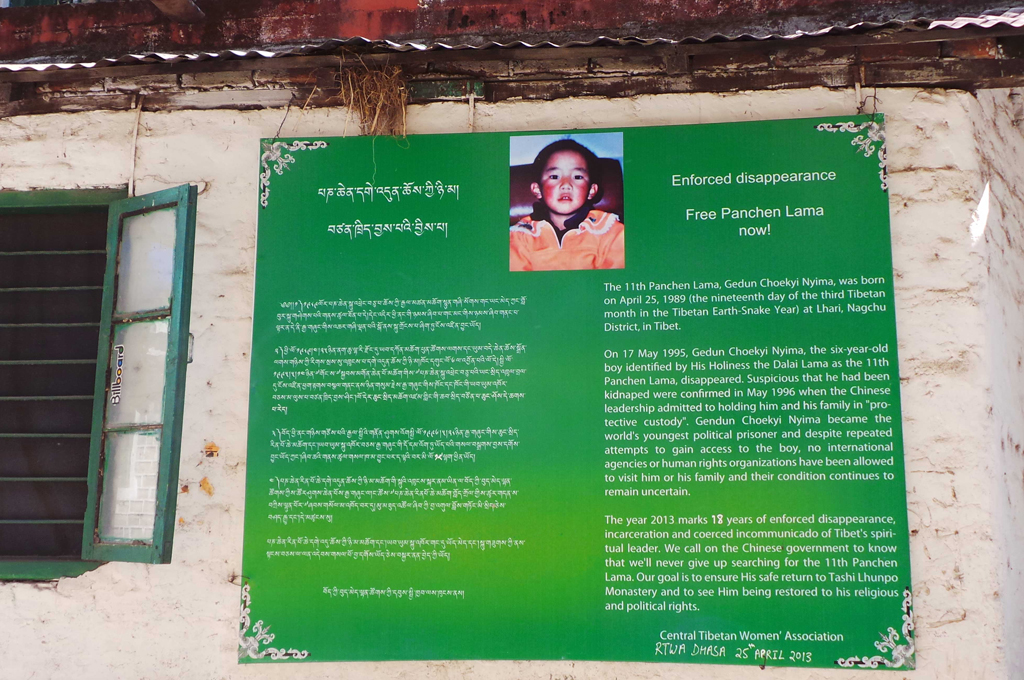
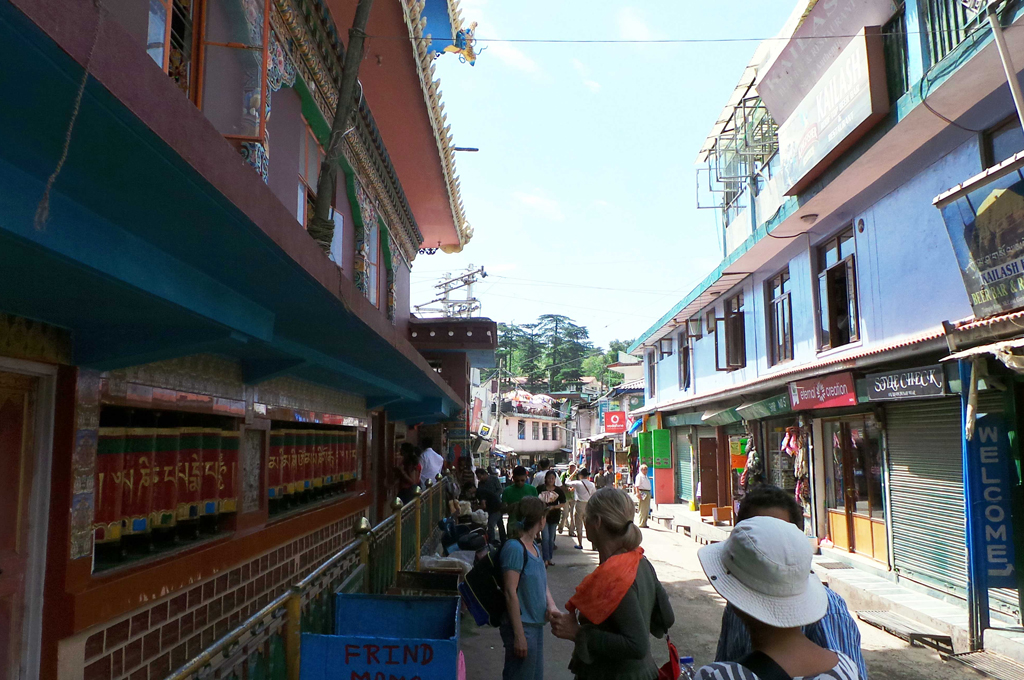
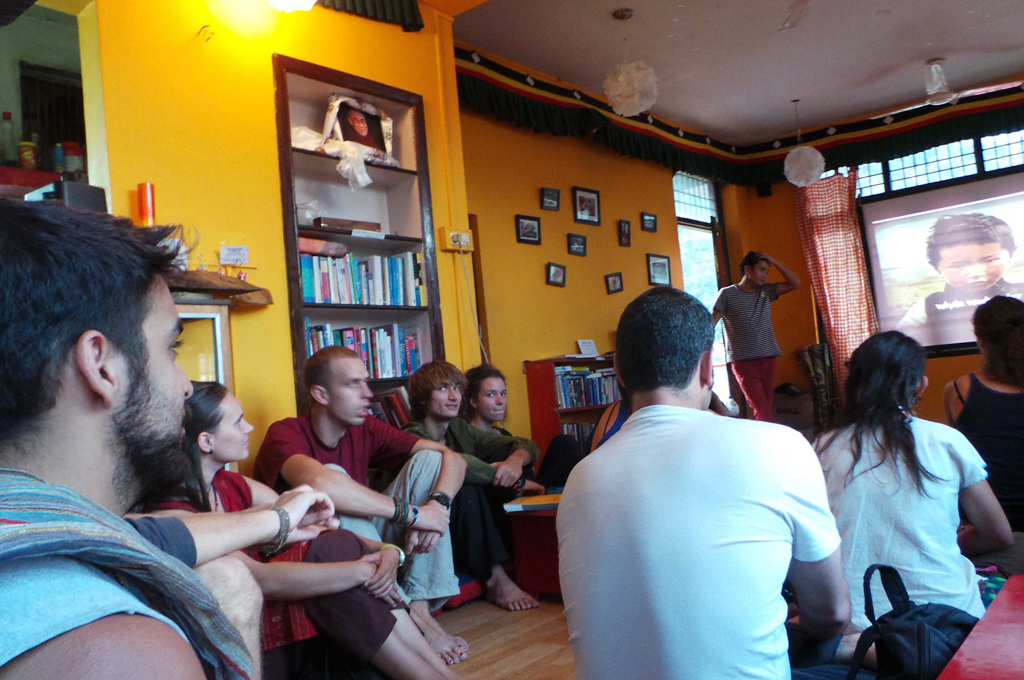
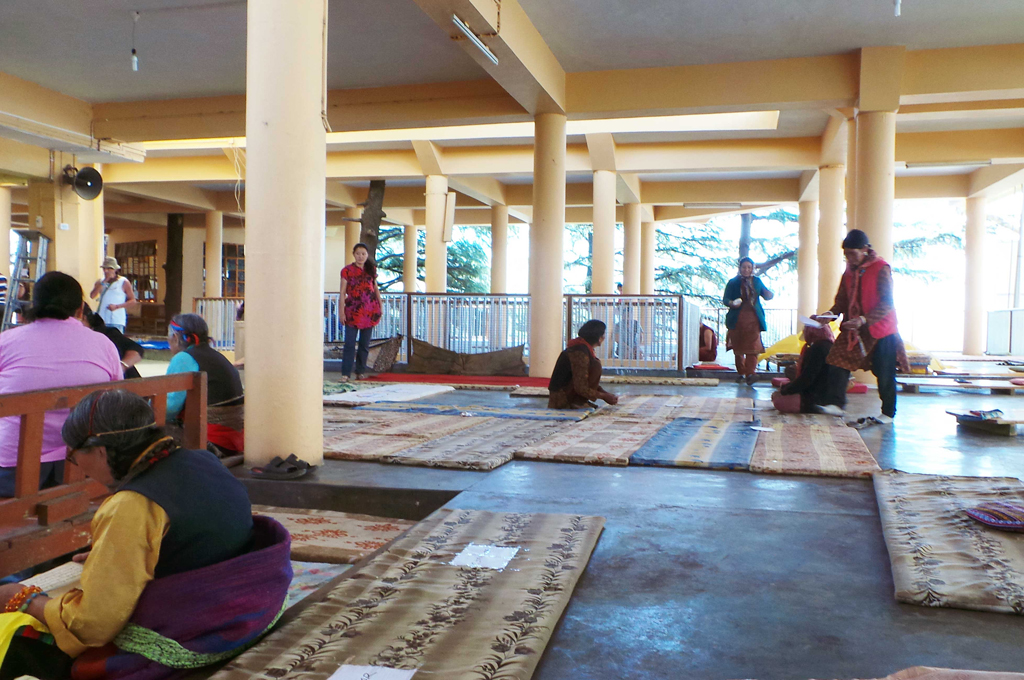
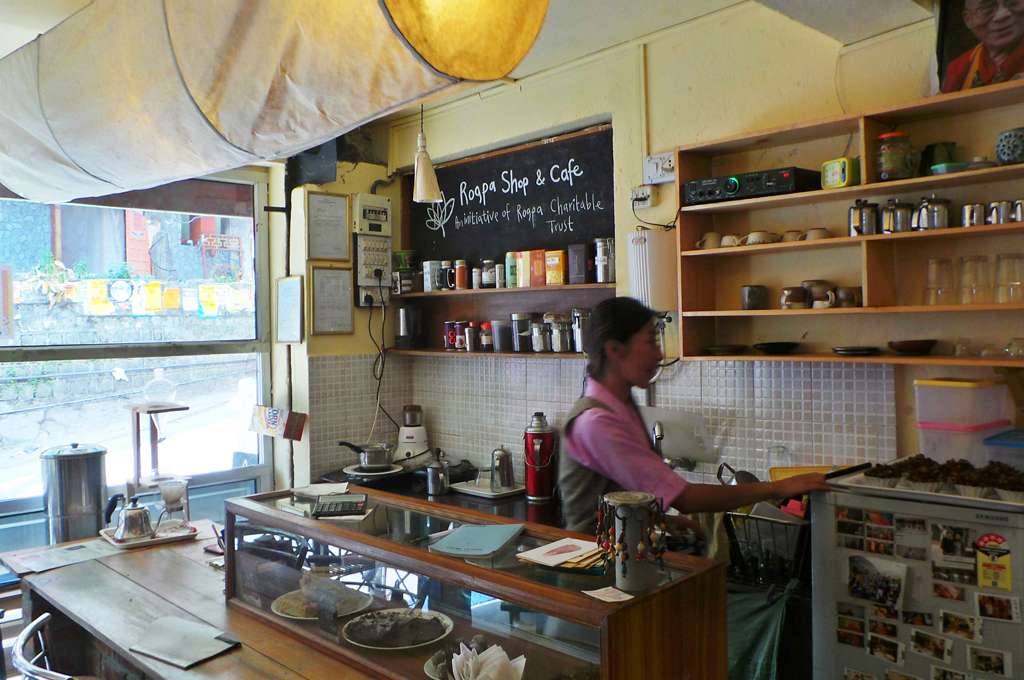
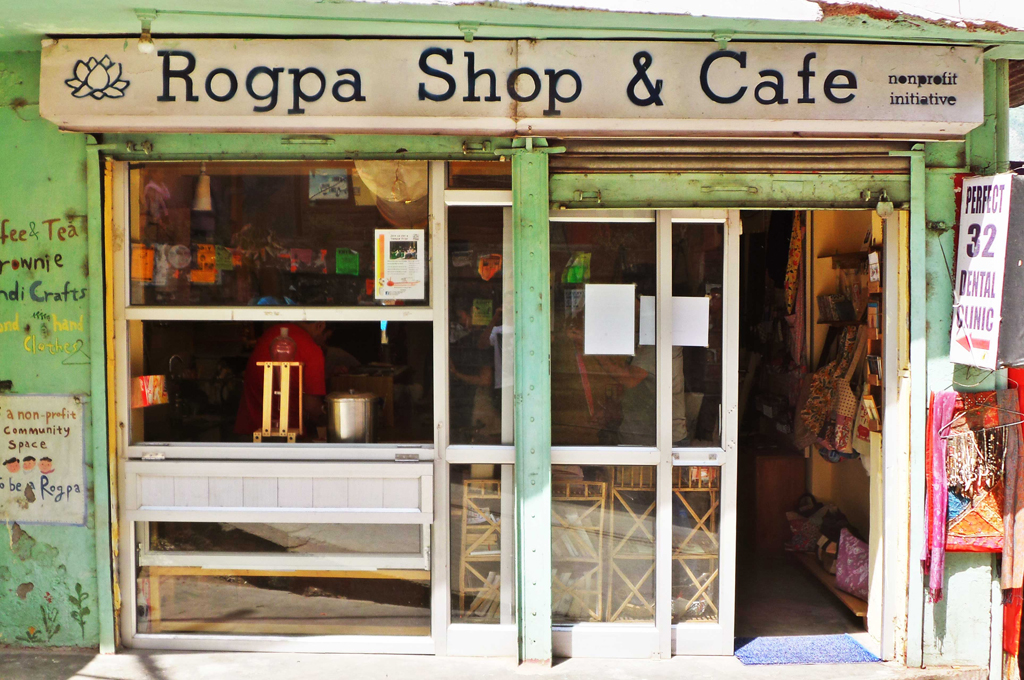
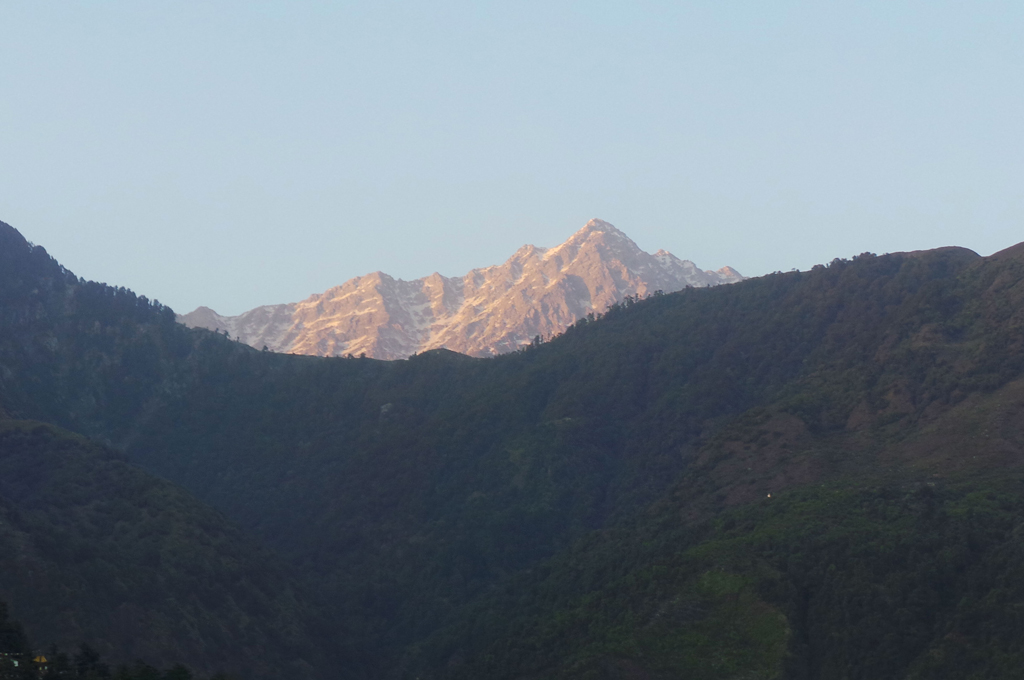
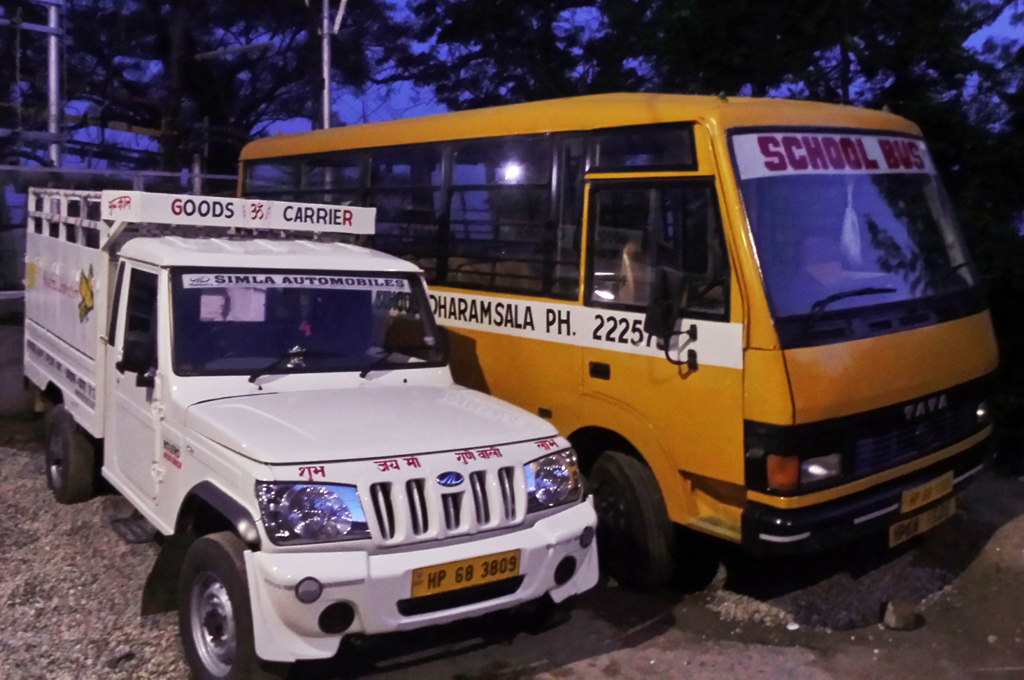

The small cafe was packed with people from around the globe. The only person standing in the room while the rest of us were sitting cross-legged on the floor was Kunsang Tenzing. Tenzing himself is as young as the majority of his audience. But unlike them, he doesn’t have a sovereign homeland.
Every Wednesday, Tenzing organizes a discussion group on Tibetan issues at Hope Café, which is part of Tibet Hope Center, an NGO he co-founded. The goal of Tibet Hope Center is to help Tibetan refugees learn the skills needed to lead an independent life outside their occupied country. And the discussion session was to remind the world, or at least its younger generation, that Tibet is not part of China.
Tenzing explained everything one needs to know about Tibet today. The historical evidence that Tibet was a sovereign nation before the Chinese invasion, the geo-political analysis on why China needs Tibet, the life story of His Holiness the 14th Dalai Lama and why the discussion is always held on a Wednesday.
Wednesday is traditionally known as Dalai Lama’s soul day. And inside Tibet, there’s a growing movement of White Wednesday. Once a week, every Tibetan should speak Tibetan, dress like a Tibetan, and only eat Tibetan food. White Wednesday is a silent resistance towards Chinese occupation, a peaceful effort to purify the land of snow.
After his presentation, the real discussion began with people asking questions and Tenzing answered them, followed by a simple buffet of momos –Tibetan dumplings.
Dharamsala, or more precisely the village of McLeod Ganj, is full of activities like this. All over the small town I saw posters advertising discussion groups whose main focus is Tibet, as well as open mic events, fund raising jam sessions, and other things related to Tibetan issues. Whereas in some of touristy places, you could easily find an opportunity to get a surf lesson, here you’ll have a chance to volunteer in an English conversational course with ex-political prisoners. This is a holiday destination for activists, or aspiring activists.
As the hometown of the 14th Dalai Lama, McLeod Ganj also has an extraordinary spiritual atmosphere. As a foreigner, however, I couldn’t help to feel like being in an open-air spiritual hypermarket. Aside from the volunteering opportunities, McLeod Ganj offers all kinds of yoga, meditation, and reiki lessons. Most of the places, offer all of them. I even saw one poster offering yoga, reiki, and Sufi meditation all at once.
To feed my curiosity towards the authentic Tibetan spiritual practice, one morning I decided to join a meditation session at Tushita, a retreat center up on the hill fifteen minutes by foot from the town’s main square. It was a solitary walk in the woods during the first ten minutes. But I was eventually joined by a Canadian woman in her early thirties. I told her it’s quite a hike. “At first,” she said. “But you’ll get used to it”. It turned out, that climbing the steep hill to meditate at Tushita is a morning routine of hers and some other fifty westerners. Not long after we all sat cross-legged preparing ourselves for the next half an hour of moment of silence, the Guru entered the room: a western man in his forties, wearing a t-shirt and shorts. After he prostrated himself three times in front of a giant Buddha statue, he started to give instructions in English with a slight British accent.
When I was in McLeod Ganj, the village was preparing to host His Holiness’s teaching. Registration opened three days before the teaching and done in conventional way where everyone has to register in person. Outside the Branch Security Office on Bhagsu Road, Tibetans were standing in line to secure a chance to receive transmission of an ancient teaching directly from the human representation of the Buddha of Compassion. There was another shorter line for foreigners dominated by monks from outside India as well as Westerners. I joined this latter queue and registered as well. The grumpy official wrote ‘IndoAsia’ on my nametag. I took it and left the office for lunch.
Lung Ta Japanese Restaurant on Jogibara Road has somewhat of a cult reputation. Officially it doesn’t open until 12.00. But everyday, hungry travelers would already crowd the front door by 11.30. Finding a table in the restaurant can be as hard as finding a room in town when Dalai Lama is about to teach. I had to wait for some twenty minutes before I could get a seat. Luckily, they have a shop selling very nice Tibetan clothes adjacent to the restaurant, where one can lose track of time browsing through all the beautiful stuffs. Just like the revenue from the restaurant, all profits from the store go to fund Association of Tibetan Ex-Political Prisoners.
I noticed the same crowd who were at the Branch Security Office that morning also came to have lunch at Lung Ta. Over tasty udon, they shared experiences of their recent trip to Burma and tips on which yoga class to attend while in town. Some of them were barefoot. Outside, a couple of guys were sharing a joint staring at the snow-capped peak of the Dauladhar ranges that gleamed under the summer sun before joining the rest of their friends inside. A sitar case was lying next to their table.
After lunch, I decided to take a walk along Jogibara Road in search of a decent cup of coffee, a rarity in this part of the world. Not long before I stumbled upon Rogpa, a cross between a boutique and a coffee shop that offered one of the best vegan chocolate cakes I’ve ever tasted, good cappuccinos, Japanese inspired bags, bracelets and other chic accessories produced by Tibetan women. Again, all profits go to help Tibetans in exile.
It was through the souvenir trade that I got to meet Imran, a young Kashmiri in his mid-twenties who is probably one of the few shop owners in Dharamsala who didn’t display a picture of Dalai Lama in his shop. Instead, there’s a massive photograph of Mecca’s main mosque on the wall and a smaller picture of his family’s houseboat floating on Dal Lake in Srinagar on a table in the corner.
It was Friday noon and I soon found myself joining him on his weekly walk to the nearest mosque for Friday prayer. On Temple Road, just a few meters from Dalai Lama’s main temple, we stopped to pick up Imran’s friend. After we stocked up on cold drinks – Imran’s friend insisted to buy me a bottle of Mountain Dew – we took a detour going off the main road down the hill.
It was not a walk in the park. Literally. The sand and the pebbles made the path, if it even existed, extremely slippery. I fell and rolled around on the ground while the two hosts easily navigated the path as if they were walking in a mall.
After a few meters of walking downhill, we entered a forest. For a while, there’s nothing in sight except trees and greeneries.
“We’re always waiting for Friday to come. Because finally we’ll have one day to get out of our stores and take a walk in the nature”, said Imran as he swiftly walked along the not so beaten path. I only nodded my head as I was trying hard to catch my breath.
After forty minutes, we arrived at a small bridge just outside the parking lot of a villa. Imran and his friend took a seat under a big tree. I thought we finally reached our destination, but this turned out to be the halfway rest area for them. They chatted and joked in Kashmiri, took pictures with their smartphones, and basically just enjoyed their time lounging around in nature.
“There’s actually another mosque in McLeod Ganj,” Imran’s friend told me. “But the Government closed it down because the Tibetans want to build a temple over there. But we’re not giving up. We took this matter to the court. Insya Allah, we’ll have the mosque back,” he continued.
We continued making our way downhill until we reached the highway. We then walked along the highway for 25 minutes until we finally arrived in Proper Dharamsala to reach the mosque. On our way back on a shared Jeep, I realized the mosque is 9 kilometers away from McLeod Ganj.
I was standing in the middle of the crowd in Dalai Lama’s main temple. Everyone else was busy marking the floor with their cushions or clothes, the traditional way of reserving seats during the teaching. I was not very familiar with the system, so I was afraid to get it wrong. So I just stood in front of the main entrance. Suddenly, I felt something grip my arm tightly. I looked up and saw a middle-aged monk looking straight into my eyes. There’s a fierce energy of enthusiasm transmitted from him directly to me. The energy was so strong I was mistaken to interpret it as an aggressive force. He said something, but his accent made it difficult for me to understand. After a few seconds, I was able to understand that he wanted to show me the best spot. He led me to a vacant space, directly facing the main throne where His Holiness was supposed to give teaching the day after tomorrow. “Here. The best,” he said. I immediately put my cap and bag there. “Thank you,” I said to him. He smiled, and instantly disappeared among the crowd.
In the afternoon, I came back to the temple and found that someone has removed my belongings. On the exact spot where I put my stuff a few hours ago, there’s a piece of paper with the word ‘reserved’ written boldly on it. I wanted to get my spot back, so I threw the reservation sign out and put my cap and bag back to where I think it should be, just to find out, someone else has once again removed them the next morning.
On the last afternoon before the first day of the teaching, I walked around the temple to look for a vacant spot. But every inch of the temple had been marked. It was at this moment of desperation that I got involved in a conversation with a Canadian man who told me that it was basically useless to try and find a place to sit just a few hours away from the teaching.
Trying hard to be positive, I replied, “It’s fine. It’s an exercise in letting go,” I told him.
“You’ll be lucky my brother. It’s all part of the plan,” said the man as he gave a comforting smile to me.
The next morning, I threw myself into a sea of devotees. I entered the Tsuglakhang Complex and tried to find an empty place where I could put my cushion and sit. But even right from the entrance, it seemed that there was no space left. The whole complex was full.
Trying my luck, I went upstairs toward the Main Temple. I passed the space just opposite the throne where I was supposed to sit and saw people sitting murmuring prayers. So I just walked by and decided to take a seat at the only empty space, next to the staircase. Right before me, Tibetans and Foreigners were circumambulating the temple quietly chanting “Om mani padme om” spreading the mantra to every corner of the world.
For a while I just sat there, trying to find the radio frequency for the English translation with my newly bought cheap Chinese made FM radio. Thirty minutes later, I noticed, that there were fewer and fewer people walking around the temple. At one point, everyone sat at his or her own respective places. Then an old nun walked past me carrying a pot of incense. She went back and forth filling the air with mystery and anticipation. She was soon followed by bodyguards carrying walkie-talkies and armed Indian guards carrying AK-47’s. One of the bodyguards stood right next to where I sat while the Indian armed guards stood in every corner of the temple.
The atmosphere was getting more and more intense by the second. The whole group of nuns, who sat across me, started to look at the direction of the staircase. And everyone else followed. Since I sat next to the staircase, where a huge pillar blocked my view, it was impossible for me to see what’s coming. So I tried to pay attention to the expression of the nuns instead. They all looked extremely excited. Charged with energy, enthusiasm shone on their eyes. Everyone was leaning forward. Those who had been sitting cross-legged were now on their knees. They put their palms together toward the direction of the staircase. Suddenly, silence pervaded the entire space. Two senior monks then appeared from the huge pillar next to me. Not long afterward, His Holiness the 14th Dalai Lama himself followed.
An Indian devotee called him loudly, “Your Holiness! Your Holiness! Do you remember me, Your Holiness?”
He then approached him and answered, “Of course. I remember your eyes.”
“Bless me Your Holiness, bless me!” begged the disciple.
The God-King then lifted up his arm and instead of touching the man’s head softly with his palm saying a prayer, he hit his head playfully before letting out a joyful laughter.
Then unexpectedly, he approached me. And I was lost for words when he physically stood right in front of me. I tried to say something, but for a few seconds, I felt like my tongue was tied and my lips were locked. I eventually managed to say, “Hello”. He looked at me in the eyes and smiled. A few people around me silently wept.
During the course of the teaching, I noticed the monk who directed me to the spot across Dalai Lama’s seat. Before the teaching began, he would pass by me as he circumambulated the temple and each time, we would greet one another.
On my last evening in McLeod Ganj, together with my wife and a friend, I decided to put an authentic culinary closure to our stay. So we headed to this typical Punjabi restaurant in the Main Square that we had always wanted to try. As we waited for our biryanis and papadams to be served, I saw a foreigner having dinner with a monk just across our table, and wondered how they had become friends.
Suddenly my eyes caught the sight of the helpful monk again. He stood across the restaurant looking at people passing by at the chaotic Main Square. My friend excused himself for a moment to pick up something from a shop next door. The next five seconds, I saw him talking with the monk. And it’s not long before both of them, the monk and my friend, walked back into the restaurant. It turned out that the monk had decided that it’s a good idea to join us for our last supper in McLeod Ganj.
We finally got to know more about the person we often greeted. He lived in a Tibetan settlement camp in Gondia, a remote corner of Maharashtra. He went up north to Dharamsala because he has health problems that made it difficult for him to stay in hot climates. Once summer is over, he will go back to Gondia again. Then, he took out a small pouch and gave us some barley seeds.
“This for protection. Tashi delek,” he wished us a safe trip tomorrow. We put the seeds in our wallet and thanked him.
After a moment of silence, he asked, “Do you have time? Because you will leave tomorrow, I want to show you something.”
Just when we say “Yes”, immediately he rushed out of the restaurant and tried getting a taxi.
The place he wanted to show was a 15-minute drive from McLeod Ganj. It’s the headquarters of the Tibetan Central Administration. Once we entered the main gate, with great enthusiasm, he showed us around. The Parliament Building. The Prime Minister’s Office. The Supreme Court. The Department of Health. The Department of Education. This is the real life of Tibetans in exile outside of the tiny tourist towns of McLeod Ganj. This is where the real country in exile takes function. Where the politicians meet during the day and children come out to play in the afternoon. The place where the awkward teenage boys hang out in the evening trying to socialize with their female peers. This is where I finally saw school bus for Tibetan children. The location of the hidden day-to-day normal life.
But, he hasn’t finished yet. Walking very fast, he took us to Nechung Monastery.
“This is where the seeds I gave you came from,” he said as we walked inside.
From the outside, it’s not an ancient building. But as we entered the hall, the atmosphere was thick with something that is older than anything I could think of. A group of monks were chanting mantras in low voices as the sun began to set.
Soon, we were instantly immersed in the long journey of Tibetan Buddhism. Almost whispering, he explained everything about the temple. He took us to see the picture of Dalai Lama’s teacher, a painting depicting Padmasambhava –the man who’s responsible for bringing Buddhism from India to Tibet, and several other deities.
But the defining the features of the temple is something we were about to see in the next room: the chair of the state oracle of Tibet.
“A monk will sit here and Nechung will enter him. He will speak a language only the Dalai Lama could understand,” explained our monk-friend cum impromptu guide about the mystical chair with a faux tiger skin carpet underneath it.
Nechung is the official state oracle of Tibet. As a person, he was very close to the 2nd Dalai Lama. He was then entrusted the responsibility of protecting every incarnation of Tibetan leaders. Now, as a deity, he is still around to give protection and at times, political consultation for the 14th Dalai Lama. The decision to flee from Tibet for India in 1959, was taken after a consultation with Nechung. In his autobiography, Freedom in Exile, the Dalai Lama wrote about a session where Nechung, through a medium of possessed monk, immediately told him to go and grab a pen and a piece of paper, and draw the route he should take to escape to India.
“Your seeds came from Nechung,” he said before walking swiftly outside. “Come, I’ll show you.”
Outside, it was getting dark. He took us to a courtyard in front of the temple.
“Look,” he exclaimed as his hand pointing toward Dauladhar ranges. I’ve seen it from different spots in McLeod Ganj at different times of the day. But at dusk, from Nechung Monastery courtyard, the unobstructed view was just spectacular. Vast and majestic with snow peak at the top, its grand beauty looked like a natural fort guarding the kingdom in exile.
We spent several minutes admiring its beauty when we realized it was getting dark. So we left the Nechung Monastery and went back to McLeod Ganj. When the taxi dropped us at the center of the town, it didn’t take long for our new friend to bid himself goodbye. He looked at us and said; “Now I must go.” Quickly he walked on and we lost sight of him in the midst of the crowd as if he just vanished into the hot summer night.
To attend Dalai Lama’s teaching, check his schedule here.
Getting there
Buying train tickets from outside India is getting harder these days with Indian state railroad company, IRCTC, only accepts online payment if you use American Express plus an Indian mobile phone number. Alternatively, there are plenty of options to hire a car with a driver from Delhi to drop you in McLeod Ganj and pick you up a few days later. One of the most reputable is Namaste India Tours. The journey will take approximately 12 hours. A less comfortable option would be to take an overnight bus from the Tibetan settlement area of Majnu Ka-Tilla in New Delhi.
Where to stay
Just steps away from the Main Temple is Chonor House, a beautiful boutique hotel with excellent restaurant run by the Norbulingka Institute, an organization aimed to preserve the art and culture of Tibet. The rooms and the common areas are tastefully decorated with works done by the best Tibetan artists. The terrace restaurant, and some of the rooms, afford a direct view to Dalai Lama’s residence.







